Coronavirus and the World-Economy: The Old is Dead, the New Can’t be Born
March 27, 2020 at 1:31 pm | Posted in Uncategorized | Leave a commentTags: 21st Century Capitalism, Bangladesh, Brazil, Britain, Central Asia, China, climate change, Cold War, Cuba, Denmark, Eastern Europe, Europe, Germany, Hegemony, India, Italy, Mexico, South Africa, U.S. Politics, United States, World-economy
“The crisis consists precisely in the fact that the old is dying and the new cannot be born; in this interregnum a variety of morbid symptoms appear.”
– Antonio Gramsci, Selections from Prison Notebooks.
The novel coronavirus pandemic has struck the world-economy in a way no other crisis had done before. Earlier pandemics—like the Spanish flu of 1918—struck a world which was far less integrated than today and supply-chains did not then span the planet. Nor was there then the volume of long-distance travel that could transport the virus all over. Since the SARS epidemic in 2002, airline data indicates that air traffic from China alone has increased ten-fold. The Great Depression of 1929-33 settled in over time: now, as countries close their borders and order all non-essential businesses to shutter their stores and offices, economic activity has ground to a halt without parallel. At that time, manufacturing commanded a large share of the economic output, and inventories that piled up could be sold as conditions eased up. Today, services account for the bulk of economic activity and a haircut, an Uber ride, or a dinner at a restaurant foregone cannot be made up. The global financial crisis of 2008-09 may have plunged economies on both sides of the North Atlantic into a recession but not China, India, Brazil and other ‘emerging market economies.’ This time it is different: it affects the entire planet even though its impact is conditioned by how this virus mutates and scythes through populations with different immunities and age, class, gender, and ethnic compositions.

The very distinctiveness of the current situation makes past experience a poor guide even though past experiences can provide some clues. Social distancing as a means to mitigate the spread of the virus will have little effect in densely populated, low-income states. The last major pandemic was the Spanish flu of 1918 which may have come out of Kansas and is estimated to have killed 1 to 2 percent of the world population. But its impact across the world varied widely: 60 percent of its fatalities came from western India where a major drought did not prevent grain exports to Britain and the more malnourished population was more vulnerable.

The greater vulnerability of the poor to the novel coronavirus, Covid-19, will tragically be repeated once again. Social distancing as a means to mitigate its spread will have little effect in densely populated, low-income states. How do people in slums or informal settlements practice what is misleadingly called social (rather than physical) distancing? In Johannesburg’s Alexandria township, 700,000 people live on 1.9 square miles; the same number of people are crowded into Dharavi’s 0.81 square miles in Mumbai; and Rio de Janeiro’s Rocinha is as large as Dharavi but with only 200,000 people. Daily laborers, and people who sell used clothing or vegetables don’t have the luxury of working from home. Nor do people in slums and favelas have easy access to clean water to practice the hygiene recommended to prevent contagion.

Ethnic and racial minorities in wealthier countries are also less able to practice physical distancing. A study by the Economic Policy Institute in Washington, D.C., found that less that 30 percent of the people in the United States have jobs that can be done from home in 2018. Even if new telework technologies like online schooling are included, only 16.2 percent of Hispanic workers and 19.7 percent of African Americans are able to work from home compared to 30 percent of Whites and 37 percent of Asian Americans.
Taxi owners in New York city who took out large loans to buy the medallions to drive yellow cabs are facing ruin as air traffic virtually ceases and the city shuts down. People supplying essential commodities—fruits, vegetables, and other agricultural products—have no option than to work if they are to feed themselves and their families. And in the United States, they and the workers in abattoirs are poorly-paid migrants.

It should be blindingly obvious that policies implemented in wealthier North American and European countries cannot be blithely applied in the Global South—and yet that is precisely what the Narendra Modi government has done in India. It imposed a virtual ban on movement within the country for 21 days with just 4 hours’ notice—leaving migrant workers stranded and making no provision for wages in a country where upwards of 90 percent of the working population are in the informal sector and the density of population is almost 400 per square mile. Conversely, Jair Bolsonaro of Brazil and Andrés Manuel López Obrador of Mexico have dismissed the pandemic as a minor aberration.

Low income countries also do not have the infrastructure to deal with a major pandemic: Bangladesh has 170 million people but only 500 ICU beds. The worst affected country in Europe, Italy, has only 4 doctors per 1000 people; India has less than 1 and other countries fare even worse. Populations of low income states are also more vulnerable to environmental pollution which reduces their immunities. One third of coronary respiratory diseases in the world in 2018 were in India which also has the largest number of tuberculosis patients in the world—and the latter are especially at risk for Covid-19. One estimate suggests that 300 million Indians could be infected by the virus by July and fatalities could be anywhere from 2 to 3.5 million.
Much of the clothing sold by big brand name corporations in the Global North are made by workers in China, Bangladesh, Laos, Cambodia, and elsewhere. With lockdowns being imposed in Europe and North America, companies are cancelling orders and since manufacturers are only paid once their products are shipped while they have to pay their workers and material suppliers beforehand, they are now stuck with large inventories of clothes that have shelf-lives determined by the season. Their governments do not have the ability to bail out manufacturers in the ways contemplated by governments in high-income states. Unlike the United States, they cannot simply print more currency, especially when the currencies of states in the Global South are plunging relative to the dollar: the Indian rupee is now at a historic low as is the South African rand to take just two examples. It is clear, then, that the impact of the virus will be felt disproportionately by the poor, especially in low income countries.

If the disproportionate impact on the poor is similar to prior pandemics and crises, it is not at all clear how the world-economy will emerge out of it. Responding to the collapse of stock markets, governments are pumping money into the economy but when people are ordered to stay home, the circulation of money slows down as well—especially for small businesses. The Amazons and the Walmarts may advertise for tens of thousands of more workers, but that will barely make a dent in the number of employees shed by small businesses.
Broadening our aperture, the scale and suddenness of economic and social disruption is such that there can be no return to the pre-pandemic situation. Supply-chains within and between states have been severed, perhaps irretrievably. The range and severity of these disruptions would depend on how the Covid-19 impacts populations—depending on the virus’ mutations and age, class, ethnic, and gender distributions of specific population groups with their different disease experience and immunities. Given the expansion of robotics and numerically-controlled machines, the ongoing disruption of supply chains may well lead to a further replacement of workers by these technologies, especially if the virus scythes through low-income economies disparately.
Again, while the stock market collapse and the rise of unemployment may recall the Great Depression, conditions today are very different. During the 1920s and 1930s, the industrial working class was a key component of the recovery. Solidarities formed in factories and mines were the basis of organizing against deprivation—to the New Deal in the United States and to the beginning of the modern welfare state in Europe. Widespread de-industrialization and the destruction of unions in the contemporary world have cut the ground from under the trade unions. In these conditions, as the electoral appeals of Trump, Boris Johnson, Matteo Salvini and others indicate, the atomized successors to historically advantaged middle and working classes have turned against ethnic minorities and migrants; against globalization and towards a reactionary nationalism. This is true not only in Europe and North America but even in South Africa where migrants from other African states face xenophobic attacks.

Keynesian policies adopted in the Great Depression to increase demand did reduce unemployment but not by nearly enough: in the US, it fell from a peak of 25% in early 1933 to 14% in 1940. It was the Second World War which transformed the US into the breadbasket and factory for the Allied war effort and military mobilization which eventually solved it. And after the hostilities, when de-mobilization raised the prospect of surging unemployment again, Pax Americana led to a new burst of economic prosperity that lasted for a little over two decades—the ‘Golden Age of Capitalism.’
The Cold War was the essential component of this age: military mobilization and aid to European allies, and domestically a pact between Big Government, Big Business, and Big Labor led to an era of consumerism at home and abroad; the Soviet Union which assumed responsibility to maintain the peace from East Germany to the 38th parallel similarly implemented relatively successful reconstruction in its zone; and independence brought modest rewards to former colonies in Asia, the Middle East, Africa, the Caribbean and elsewhere.
Today, the United States exercises no intellectual leadership: indeed, its president with, what Peter Baker and Maggie Haberman characterized in the New York Times as, his “profound need for personal praise, the propensity to blame others, the lack of human empathy, the disregard for expertise, the distortion of facts, the impatience with scrutiny or criticism” has proved singularly inadequate to the task. His attempts to buy exclusive rights to a vaccine being developed by Curevac, a German company funded by the German government has offended and exasperated not only the Germans but all thinking citizens everywhere. This is hardly the type of leadership one expects from the leading power. Even worse, the US prevented a G7 declaration on the virus because of the Trump Administration’s insistence on calling it the ‘Wuhan virus’ instead of the ‘coronavirus’!

In contrast, China is stepping up to aid countries: sending doctors and medical supplies to countries from Peru to the Philippines, Japan to Spain. Cuba is dispatching its doctors to Europe and elsewhere. The United States, after having failed to secure exclusive rights to a potential vaccine, is now scouring Eastern Europe and Central Asia for medical supplies and refusing to implement its Defense Production Act to compel its domestic industries to produce these vital goods in a critical time. Rather that demonstrating leadership, seeking to procure essential medical supplies from these poorer states harkens back to Britain’s policies of requisitioning food from its colonies even when they were suffering droughts.
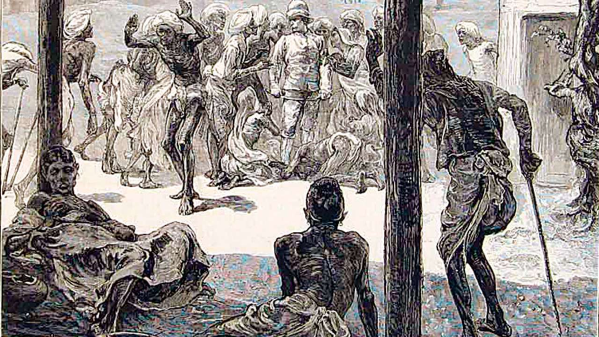
Meanwhile, Trump’s allies in the U.S. Congress are pushing through a bill to provide about $1,200 dollars (for those with an annual salary of $75,000 or less) and $500 per child: not even enough for a month’s rent in a major metropolitan center. Strong opposition from Democrats overcame objections to increase some contributions to the poor like extending unemployment benefits but these still remain very inadequate and short term. In contrast, the government of Denmark is guaranteeing 75 percent of salaries (upto $3288 a month) of those with annual salaries of $52,400: amounting to almost 13 percent of GDP. It is the provision of cash to the employees and workers whose spending generates multiplier effects that can at least partially revive economies though that also depends on how supply chains are reconstituted.

The Democratic Party seems equally rudderless. Its presumptive presidential nominee, former Vice-President Joseph Biden has hunkered down at his home and has not been seen making policy statements. Though the Democrat-controlled House of Representatives passed an early bill, it didn’t address fundamental problems and they are now likely to adopt the Senate version of the stimulus package, with minor revisions at best. Given the urgency of the situation and the strength of industry lobbies, much of the relief will in any case go to companies that have long avoided taxes including cruise lines that fly the flags of other nations than to the lower classes and to ethnic and racial minorities in the country.
The Second World War and the Cold War reconstituted the world-economy on a new basis because the concentration of economic and political power in the United States enabled it to exercise intellectual leadership when most other industrial economies had been devastated, hegemony in the Gramscian sense. The United States no longer has a similar dominance. Nor does any other state or group of states.
What the pandemic makes clear though is that we need a fundamental change in institutional structures of the world-economy. Wealth inequality has escalated everywhere in the world and is no longer sustainable. The emergence of a precariat, now subject to extraordinary deprivations by the shutdown of economic activities, is not the result of the pandemic or of low oil prices. State institutions have become increasingly privatized. Distinctions between center-right and center-left parties have been erased and neither one shows any inclination to compel Big Pharma to invest in research to preserve public health and prevent the spread of infectious diseases. Indeed, fifteen of the eighteen major pharmaceutical companies have stopped research on antibiotics and antivirals to focus in medicines that generate large profits: to treat male impotence, addiction from tranquilizers, and heart disease. Viruses jump more easily from animals to humans as nature is being destroyed and as cheap meat is dependent on factory farming which also has disastrous ecological consequences. It is imperative to reduce meat consumption..

How we address these issues—and the issue of global warming and climate change—will be key to a new, sustainable, and more equitable pattern of life. With the old dying, and the new being unable to be born, we are condemned to an unstable and volatile future.
Modi, An Indian Caesar? Or, How Not to Interpret the Indian Election Results
May 19, 2014 at 12:10 pm | Posted in Uncategorized | 1 CommentTags: Capitalism, democracy, India, Labor, world politics, World-economy
Narendra Damodardas Modi’s spectacular victory in the 16th Lok Sabha elections—the first time in 30 years that a single political party has gained a majority of seats—has been hailed as a “democratic asteroid” by Sunil Khilnani, presumably in reference to the asteroid that is said to have exterminated the dinosaurs. The venerable dinosaur of Indian politics, the Congress Party, has indeed been reduced to a cipher, gaining less seats all-India than Modi’s Bharatiya Janata Party (BJP) won in Uttar Pradesh alone. And Pratap Bhanu Mehta crowed “Modi is a political phenomenon without precedent”:
he presented himself as something new: to walk into Bihar and talk about transcending caste politics, to utter the sentence no secularist in India has had the courage to utter, that poverty has no religion, to dream of reviving India’s growth prospects, to talk about jobs, to tap into the restlessness for doing things. He became an embodiment for a desire for change.
Even critics of Modi for his failure to protect Muslims from a massacre in 2002 when he was chief minister of Gujarat, like Tunku Varadarajan, argue that “it is time to wipe his slate clean” as we must honor the choice of the electorate and stop harping on 2002 because:
the size of Modi’s majority, … would allow him to govern magnanimously, and with no vindictiveness toward those who did not vote for him. His parliamentary numbers allow him to enact economic reforms that Indians crave, with no need to buy off, or kowtow to, difficult coalition partners. They allow him, also, to extend a hand of reconciliation to India’s Muslims, who, at 11 percent of the population number just over 170 million people. Early analyses indicate that only 10 percent of Muslim voters cast their ballots for the BJP, although the party did win just over 40 percent of all seats with a significant Muslim population.
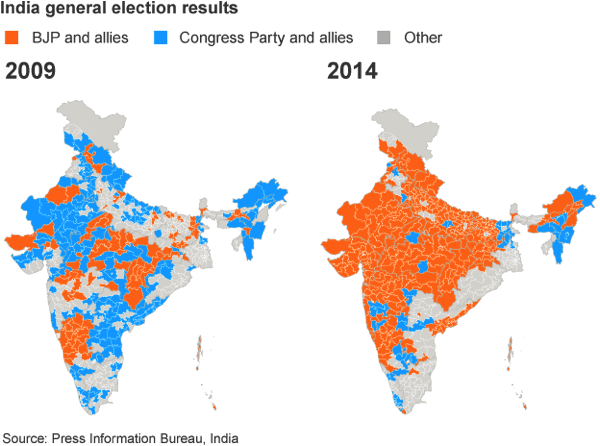
Even a cursory glance at the electoral map of India will reveal the magnitude of BJP’s victory and the virtual annihilation of the Congress Party. Indeed, borrowing a page from Indira Gandhi’s victorious 1971 Garibi Hatao (“Eliminate Poverty”) campaign that projected her as a presidential-style candidate, Modi bested the Congress led by her daughter-in-law and grandson, by jettisoning the BJP’s Hindutva rhetoric and projecting himself as a no-nonsense champion of free enterprise and corporate capital.
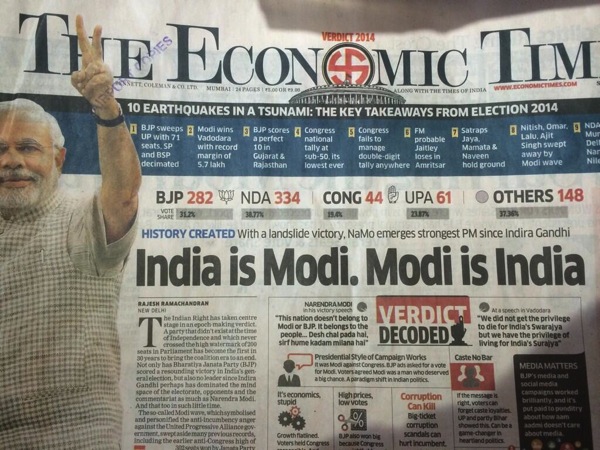
In the first instance, the BJP’s stunning victory was a complete repudiation of the Congress—just as the 1977 Janata Party triumph was a repudiation of Indira Gandhi’s Emergency Rule. After having delivered high rates of economic growth during the Congress-led First United Progressive Alliance (UPA) term (2004-09), the country’s growth rate was halved during its second term (2009-14), even though at an annual average of 5.4%, it was still respectable in world terms when other economies are limping along at 0.1% to 2% annual growth rates. Rejection of the Congress stemmed from the Manmohan Singh government’s seeming inability to promote any bold initiatives when the economy was sluggish and inflation had risen to a three-month high in April, just as the massive nine-stage election got underway.
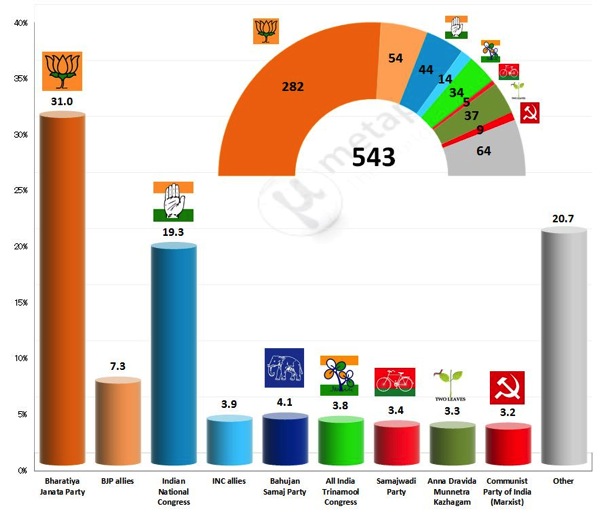
As pessimism about the economy mounted, Modi projected his ‘vibrant Gujarat’ as the model for India—a model with 24-hour electricity, a thriving agricultural sector, and the world’s largest oil refinery. Modi’s no-nonsense approach to industrialization was manifested by his invitation to Tata to produce his Nano car in Gujarat in 2006 after a two-year long farmers’ protest in Singrur, West Bengal led the company to abandon the project there. Modi immediately welcomed him to Gujarat, cut through the red-tape, and signed an agreement in a record 10 days with Tata Motors. This was, as Vinod K. Jose underlined, Modi’s decisive shift from brutal Hindutva to a corporate friendly strategy. When industrialists had once castigated him for his role in the Godhra massacre of Muslims in 2002, now they began courting him. As did intellectuals—Jagdish Bhagwati who had earlier castigated him for the Godhra massacres, told the Financial Times in an interview in April that he would be “optimistic” about India’s economic prospects only if Modi was elected prime minister. Colliding with corporate campaigns to promote Modi, the largest English-language newspaper in the country, the Times of India, “innovated a revenue-stream called ‘paid news’.”
Large corporate donations, and a slick media campaign allowed Modi to campaign all over the country—often holding five mass meetings a day—appearing in regional costumes and spending an unprecedented amount of money as India has no limits to campaign spending. Campaigning in presidential style, Modi offered as Pankaj Mishra pointed out
top-down modernisation, but without modernity: bullet trains without the culture of criticism, managerial efficiency without the guarantee of equal rights. And this streamlined design for a new India immediately entices those well-off Indians who have long regarded democracy as a nuisance, recoiled from the destitute masses, and idolised technocratic, if despotic, “doers” like the first prime minister of Singapore, Lee Kuan Yew.
And his messages were cloaked appropriately for a vast country with different electorates and he reaped a national harvest of votes except in the southern states where his economic message did not carry as these states were doing better than his ‘vibrant Gujarat’ or the East—where association with the Congress did not taint the regional parties in power.
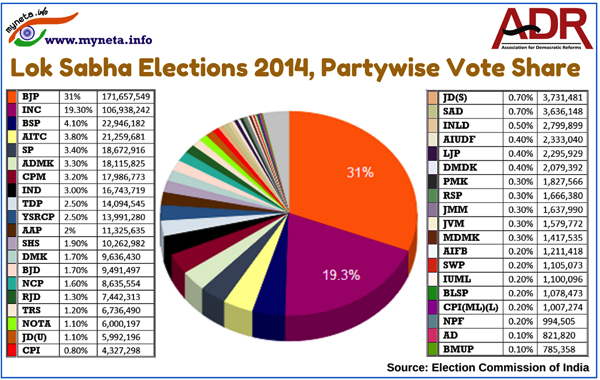
The Congress, in turn, has been reduced to a shell of its former self—its members in the Lok Sabha plummeting from 206 in 2009 to a mere 44 in 2014, not enough for the leader of its parliamentary party to be recognized as the Leader of the Opposition. As the journalist T N Ninan pithily summarizes the plight of what was once the natural party of government:
The Congress… is now without a strong base anywhere, having been wiped out in its earlier stronghold of Andhra Pradesh, bested in Karnataka, routed in Maharashtra, sidelined in West Bengal, marginalised in Uttar Pradesh, and drawn a virtual blank in more than half a dozen key states across the heartland – a repeat of its rout in the state elections five months ago.

That this was not an anti-incumbency vote is indicated by the spectacular success of the AIADMK in Tamilnadu which captured 37 of the 39 seats and denied even a single seat to its regional rival, the DMK which was itself enmeshed in the corruption scandals of the Congress party and mired in a feud within its first family; the Trinamul Congress in West Bengal; and the Biju Janata Party in Odisha.The Left had nothing to offer the electorate. After their hopes of a Third Front were cynically dashed by Jayalalithaa who refused to allocate them a single seat in Tamil Nadu, they were left making rote noises about the evils of communalism, privatization, and globalization. The CPM’s long rule in West Bengal had increasingly isolated it from the masses as shown by its brutality towards villagers in Nandigram and Singrur. With its lack of political imagination and creativity, as Shiv Vishvanathan says
The Left leadership of Mr. Bardhan and Mr. Karat belong to a Tussauds of Marxism and one hopes the Left generates new leaders open to a new language of politics and justice. Numbers must generate rethinking in these parties.
Just as much as the sluggish-ness of the economy, it was the corruption scandals that plagued the Manmohan Singh government. Instead of holding open auctions, the government allocated coal-blocks worth some ₹1.86 lakh crore (almost $30 billion) to private firms without any transparent criteria. So too were the 2G and 3G cellular spectrums allocated to private mobile networks. And since 2004, in the run-up to the 2010 Commonwealth Games in Delhi, as Vishvanathan noted,
nearly 400,000 people from three large areas of Delhi were displaced, in a series of indiscriminate evictions reminiscent of the last days of the Emergency, to make way for new construction connected to the games. The tournament infrastructure was built with rampant violations of protections like the Minimum Wages Act, and with the widespread use of child labour. The litany of moral failings could go on.
Even when pressed in the only interview he gave in 10 years, Rahul Gandhi, the Congress vice president and dynastic heir apparent, could not explain why the party failed to take action against those found guilty of corruption or continue to nominate them as candidates. His stumbling, inept performance in the election campaign, rarely answering the charges that Modi hurled at him, his mother, and the ‘dynastic’ politics of the Congress only solidified Modi’s image as a dynamic leader. As the journalist, Rahul Pandita, wrote:
And yet, if Modi jettisoned the rabid Hindutva rhetoric of the BJP, and indeed had marginalized its affiliated organizations like the RSS and the VHP in Gujarat, in the three elections he led in his home state, the BJP did not offer a single seat to a Muslim despite the community accounting for 10 percent of the state’s population. And of the 282 members of the BJP elected to the 16th Lok Sabha, not a single one is a Muslim—its lone Muslim candidate, Syed Shahnawaz Hussain, having lost the election. In his native Gujarat, Muslims are condemned to live in ghettos akin to the Jewish ones in pre-Second World War Europe as they are prevented from renting or buying houses in “Hindu” areas.
Unlike Modi, his key lieutenants, especially Amit Shah, the BJP General Secretary, said that the election was to seek “revenge” against the Muslims in Uttar Pradesh. And in neighboring Bihar, another senior BJP leader, Giriraj Singh, invited all those opposed to Modi to “go to Pakistan.” As a consequence, surveys suggest that the Congress increased its vote share of Muslims substantially—from 33 percent to 44 percent in Delhi’s Chandni Chowk constituency, and to over 90 percent in Madhya Pradesh and Chhatisgarh. Conversely, the Hindu vote consolidated for the BJP. This does not bode well for communal relations. Already there are reports of jubilant BJP supporters throwing stones and breaking windows of mastoids, of Muslims being beaten up for not participating in BJP victory processions.
Nor does it bode well that a third of the new MPs face criminal charges—and these are spread across the political spectrum.
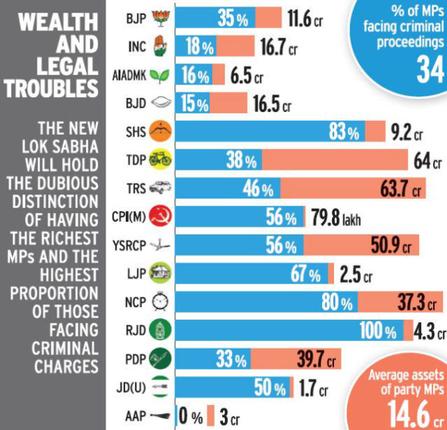
The scale of Modi’s victory and his record of cutting his rivals down in Gujarat casts him as an Indian strong man, an Indian Caesar. With the 330-odd seats that his National Democratic Alliance commands in the Lok Sabha, it is believed that he would not have to cater to the demands of his coalition partners as his BJP has enough seats to govern on its own. Though much of the implementation of economic programs depends on state legislatures, the magnitude of his victory his supporters believe will compel the states to comply with the diktats from Delhi. Once Modi gets the government out of the way and stop pampering the poor and the lazy, the narrative purveyed by the business-friendly press suggests, nothing will stop bold, innovative, enterprising entrepreneurs from making the twenty-first century, the “Indian century.” As the scale of Modi’s victory became apparent, stock prices in Indian bourses rose exponentially, and Mukesh Ambani, the country’s wealthiest man and ardent Modi supporter saw his net worth increase by $1 billion in a single day!
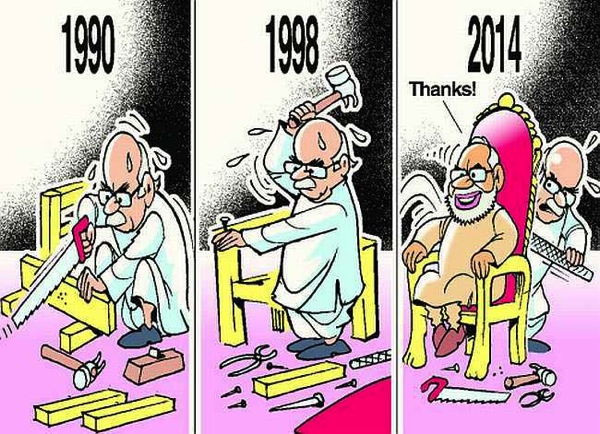
Gita Gopinath and Iqbal Dhaliwal, respectively professors of economics at Harvard and MIT, articulate the new wisdom that Modi will de-regulate the economy and India will rapidly rise in the “Ease of Doing Buisiness” rankings; that the flood of investments will lead to greater employment and as labor costs in manufacturing rise in China, India will become the natural harbor for companies seeking a cheaper workforce and there will be prosperity for all. What is crucially missing from this fairy tale is that this has been the predictions of every neoliberal experiment since the coup in Chile in 1972 and none of it has borne fruit. By neglecting primary and secondary education since independence, India has a very poorly trained labor force in comparison to China; by neglecting health expenditures, India even trails Bangladesh in many key indicators. The country’s infrastructure—roads, ports, electricity, water supply—are in shambles. And in manufacturing the world over, labor’s share in profits and plummeting as increasingly production is driven by numerically-controlled machines and robots, so greater industrialization does not necessarily lead to greater employment. In fact, by eschewing the social democratic redistributive measures, pursued albeit half-heartedly and ham-handedly by the Congress, Modi will further decrease India’s competitiveness.
Detroitism in Binghamton: A Photo Essay
July 27, 2013 at 9:56 am | Posted in Capitalism, democracy, Human Rights, Outsourcing, Political Economy, world politics | 3 CommentsTags: Capitalism, democracy, Human Rights, Manufacturing, United States, Urban, world politics, World-economy

Detroitism has emerged a while ago to encapsulate the emergence of urban ruins in North America and Europe–from Camden NJ to Naples and Bucharest–with the decline of manufacturing and the outsourcing of production to low- and middle-income economies in Asia and Latin America. Populations of these cities have declined sharply–from 1.8 million fifty years ago to 700,000 today in Detroit, shrinking tax revenues and depressing property values leading to a degradation of city services and civic amenities and spiking the crime rate. Abandoned houses are stripped of their valuables–metal and copper are sold to junk merchants to be sent to India and China to be melted down and recycled to fuel these ’emerging economies.’
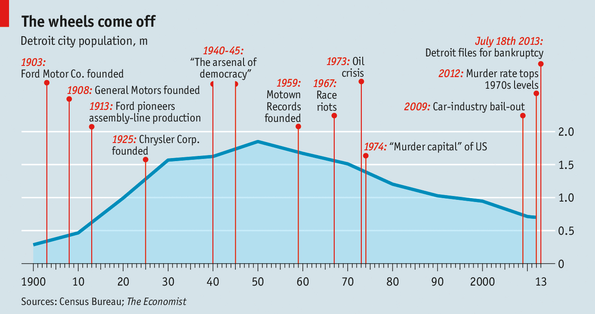
Smaller towns and cities in the United States have been declining even longer–for more than a century as the mechanization of agriculture and the exhaustion of natural resources set in even before manufacturing began to move to the non-unionized states of the ‘Sunbelt’ and later to even lower-wage locations overseas. And the emergence of ‘big box’ retailers like Wal-mart hollowed out their commercial cores as Edward Alden noted.

And so it has been with Binghamton, located at the confluence of the Susquehanna and the Chenango rivers in southern New York State. A small farming community till the Chenango Canal was constructed in the mid-1830s, linking it the the Erie Canal at Utica. In addition, the arrival of the railways in the mid-19th century transformed the area into a minor industrial hub for the production of cigars, and later shoes, and high-tech electronics. Between 1860 and 1880, the population of Binghamton rose from 8,325 to a little over 35,000. Tanneries and shoe factories–most notably the Endicott Johnson shoe factory–made Binghamton and its neighboring Johnson City one of the major shoe manufacturing centers in the United States
B y the mid-1950s however, competition from several other locations led to a steep decline of shoe production though its impact was cushioned by the rise of several high-tech firms: IBM which was founded in nearby Endicott, Edwin Link who invented the flight stimulator, Valvoline which was to become Whirlpool Corporation
y the mid-1950s however, competition from several other locations led to a steep decline of shoe production though its impact was cushioned by the rise of several high-tech firms: IBM which was founded in nearby Endicott, Edwin Link who invented the flight stimulator, Valvoline which was to become Whirlpool Corporation

At the same time, the construction of the interstate highway system, led to a fall in ridership on the trains and the last passenger train rolled off the tracks of the Lackawanna Station in Binghamton in December 1964.

The continuing growth of IBM and other technology companies related to defense and the location of one of the four university centers of the State University of New York system led to further growth over the next two decades.
Yet, the gradual decline of IBM and the closure of the last shoe factory in the 1990s led to a precipitous decline in the fortunes of the city. The arrival of big box retailers like Wal-Mart finally hollowed out the city’s commercial core.
The population of Binghamton, which had peaked at 80.674 in 1950 slid to 47, 376 in the census of 2010–less than it was a 100 years ago in 1910.














The Vanishing Middle Class
October 5, 2012 at 3:46 pm | Posted in Uncategorized | Leave a commentTags: 21st Century Capitalism, Manufacturing, Political Economy, Production, US Economy, US politics, World-economy
News today that the US unemployment rate dropped in September 2012 to 7.8 percent from 8.1 percent in August and is now at the lowest level since President Barack Obama took office will undoubtedly boost his campaign for re-election, two days after his dismal performance in the first debate with his Republican opponent, Mitt Romney. If this is good news for the president, the situation is less rosy than it appears. According to the Bureau of Labor Statistics, the number of workers stuck in part-time jobs in September stood at 8.5 million, an increase of 581 million from the previous month and double the level it was in September 2007. Even worse, the number of full-time workers in the US has declined by 5.9 million since September 2007 while the number of part-time workers has increased by 2.6 million.
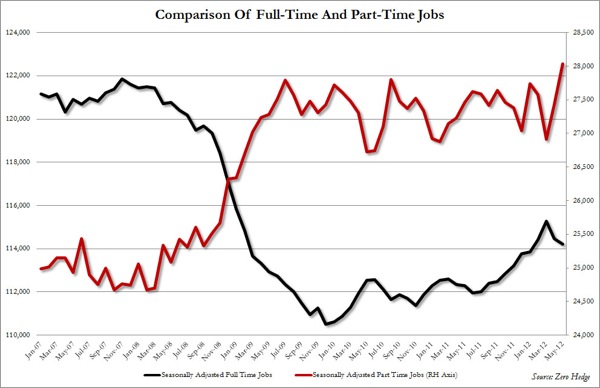
In fact, if the number of part-timers looking for full-time work, the U6 unemployment rate, is considered, it is unchanged
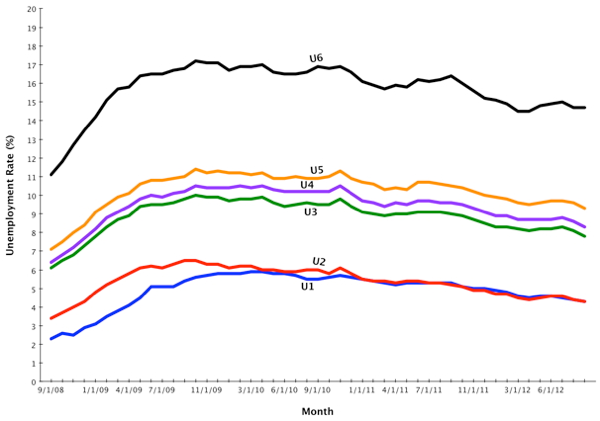
And as Moira Herbst writes in the Guardian,
It’s distressing to think that after 20th-century labor struggles won the battle for the 40-hour work week, the 21st-century struggle is a fight for enough working hours to make a living wage.
In another report in today’s New York Times, the average number of employees per new firm declined from 7.7 persons in 1999 to 4.7 in 2011. For almost the last half-century, new companies have accounted for the bulk of jobs created in the United States, In fact, without new start up companies, the United States would have seen a growth in jobs for only 7 years since 1977! The numbers of new jobs created by new companies was the greatest in 1999 as a result of the dot com boom and by 2011, it had declined by some 46 percent.
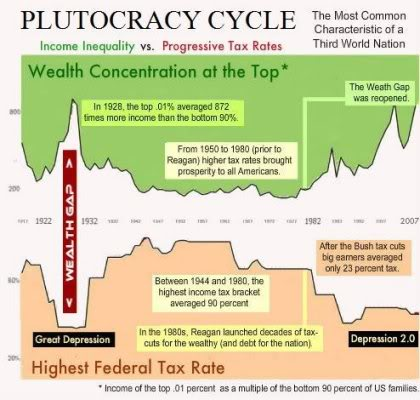
One major result of the decline of full-time employment and the rise of part-time employment is that part-timers are denied virtually all benefits. Without healthcare and other benefits, workers are increasingly compelled to rely on Medicaid and emergency room visits for illnesses and as Herbst noted, this leads to a shift in costs from employers to tax payers. This is of course covered up by both political parties in the United States: the Democrats tout the new decline in unemployment figures but never mention that 6.9 million people were working multiple jobs in the US in September. The Republicans stress cutting taxes–making health care even less accessible to the poor.
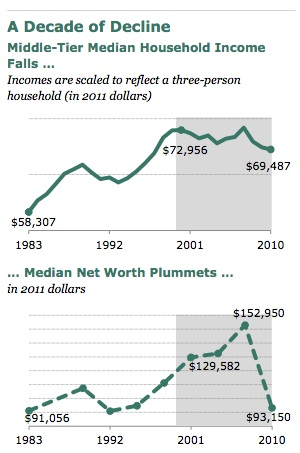
Both focus on a middle-class that is rapidly shrinking and not on the increasing numbers of people below the middle class. For them, neither candidate has anything to offer–and therein lies the shame! In today’s politics, the concerns of the masses are silent–the decline of manufacturing not only hollowed out industries but by also kneecapping labor, it has made both major political parties alike–both shifting further and further to the right, and both having nothing to offer to the vast majority of the population.
Reversing the Tide? Southern European People’s Challenge to Neo-Liberalism
September 28, 2012 at 4:16 pm | Posted in Uncategorized | Leave a commentTags: Eurozone, Greece, Political Economy, Portugal, Spain, world politics, World-economy
Earlier this week, confronted by massive street protests and criticism from his coalition’s junior partner, the center-right Portuguese Prime Minister, Pedro Passos Coelho, reversed his controversial plan for “financial devaluation.” When tax revenues fell by 3.5 percent in the first seven months of this year–due to unemployment rates spiking to above 15 percent–against a projected increase of 2.6 percent for the year, it became apparent that Lisbon would not be able to meet the budget deficit target of 4.5 percent of GDP imposed by the troika of the European Union, the European Central Bank and the Interantional Monetary Fund as a condition for disbursing the next tranche of the €78 billion bailout they promised.
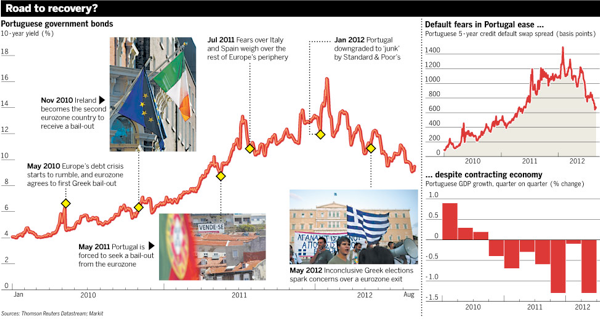
Passos Coelho’s solution to this dilemma was to cut employer’s social security contribution by 5.75 percent and finance this by increasing workers’ contributions by 7 percent. This would have been tantamount to a currency devaluation by significantly reducing unit labor costs and was heralded as a “potential game changer” by the IMF’s Poul Thompsen.
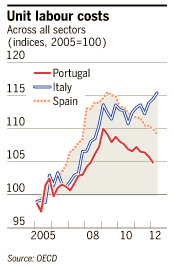
In the continued decline of the country’s GDP and high rates of unemployment, this proposal was condemned by members of the prime minister’s own party as well as by the leader of the junior partner in his coalition–the conservative People’s Party–and by many business leaders as well as of course by more than half a million people who marched in Portugal’s cities in the largest demonstrations since the end of the Salazar dictatorship in 1974.

“We are not the children of the revolution.” their posters said, “We are the parents of the next revolution.” Meanwhile, in Spain, the miners of Asturias have been battling the police for months with rocket launchers, and protestors jn Madrid were met with a fusillade of rubber bullets. With over half the youth unemployed, and the government of prime minister Mariano Rajoy planning to implement deeper austerity measures in order to say that these were taken by their own volition rather than imposed by the troika as a condition for a bailout, the right and the left united in opposition. In recognition of this united opposition, the riot police in Madrid hid their identity badges:
A startling example of police culture came in a tweet from José Manuel Sánchez of the Unified Police Union (SUP). “We support them not wearing badges for violent demonstrators,” he said during the demonstration. “Give it to them hard.” Television pictures of baton charges and rubber bullets suggest they did exactly that.
And in Spain’s second city, a million and a half people led by the provincial government marched for Catalan independence–here it was not merely the demonstrators but the regional legislators who were challenging the post-Franco accord.
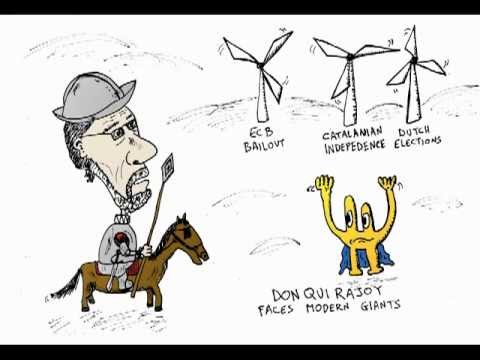
Athens exploded as well in a burst of flames as the unions called a general strike grounding flights, shuttering shops, museums, and monuments, and docking ships for hours as over 200,000 people demonstrated outside parliament protesting the new round of austerity measures the three-month old government of prime minister Antonis Samaras. Though details of the cuts were not made public, it was expected to slash pensions, wages and benefits even more.
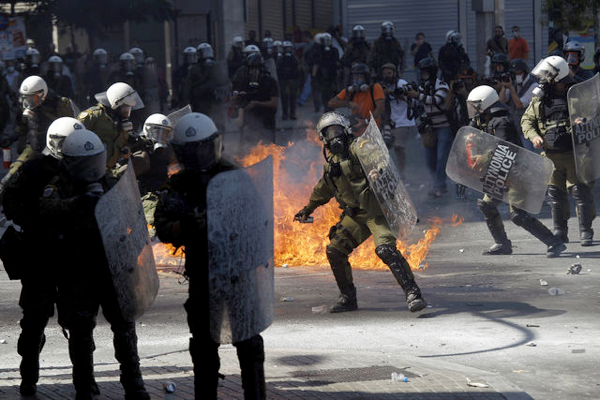
All across Europe, these riots seem a repetition of the ‘anti-IMF’ riots that raged across Latin America and Asia in the 1980s and 1990s. As Ha-Joon Chang writes
it is ironic to see the European governments inflicting an old-IMF-style programme on their own populations. It is one thing to tell the citizens of some faraway country to go to hell but it is another to do the same to your own citizens, who are supposedly your ultimate sovereigns. Indeed, the European governments are out-IMF-ing the IMF in its austerity drive so much that now the fund itself frequently issues the warning that Europe is going too far, too fast.
Just as the IMF number crunchers did not take into account the people whose livelihoods would be crippled by the savage cuts being proposed by the troika and imposed by their puppets in Athens, Lisbon, Madrid. But as the Gurardian editorialized:
Amid all their talk of haircuts (on debt values) and tranches (of loans), European leaders have barely talked about the people who are bearing the brunt, first of the crisis and then of the throat-clearing that passes for firefighting in Brussels. This is not accidental. The euro project has relied upon draining the politics out of the inherently political: the very existence of a 17-nation economic union without a common treasury is testimony to that.
The protests are now inserting the politics back into the issue–demanding that those who had no part in the financial mess created by the collapse of housing bubbles, bad loans, and high deficits should not bear the price of these costly gambles made by bankers and politicians. it is not merely the question of bad financial regulations–it is the more the question of democracy that is at stake in Europe. The Portuguese reversal of its “financial devaluation” is the first step towards reversing the tide of neo-liberalism! A small step for Portugal, a giant leap for Europe!
What Difference Will Hollande’s Victory in France Make for Europe, for the World?
May 6, 2012 at 4:25 pm | Posted in Capitalism, democracy, International Relations, Labor, Political Economy, World Politics | 6 CommentsTags: European Union, Eurozone, France, Germany, Greece, Ireland, Italy, Spain, World-economy
Francois Hollande has defeated Nicolas Sarkozy to become the first Socialist president of France in 17 years. He campaigned on a platform to renegotiate the austerity package that the German Chancellor Angela Merkel and Sarkozy had championed, with the support of the British Prime Minister David Cameron and other ‘center-right’ politicians in Europe. The victorious Hollande argued that the way out of the fiscal crisis enveloping the Eurozone is to focus on growth rather than to reduce deficits. The austerity packages, by sharply curbing government expenditures not only leads to unemployment but also reduced payments to the elderly, the young, and the unemployed. They can therefore no longer consume at their previous levels leading to further unemployment as businesses curtail production and the economy continues its tailspin–as has already happened in Greece, Portugal, Italy, Spain, and Ireland.
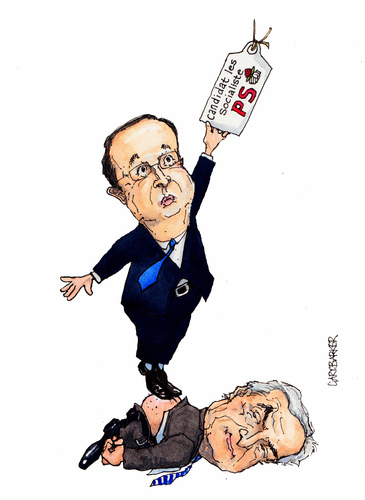
But will Hollande be successful in reviving the Eurozone economies? Will this ‘marshmallow’ man (so-called because he hates fights) be strong enough to stand up to Merkel? His potential choice as prime minister, Jean-Marc Ayrault. has suggested that rather than reopening the draft fiscal treaty driven by Sarkozy and Merkel., Hollande will seek to incorporate a minor amendment on growth. This would not be surprising as Hollande’s previous experience in government was as an aide to the last Socialist president of France, Francous Mitterand, who in his second term initiated a wave of neo-liberal reforms that de-regulated much of the French economy.
Socialist and Labor parties in Europe, as political expressions of trade unions since the late nineteenth-century, have floundered as manufacturing has shifted to lower-waged countries and trade unions have suffered a tremendous erosion of memberships. After Margareth Thatcher defeated the miners strike in 1984, European unions have steadily declined in political and social significance.
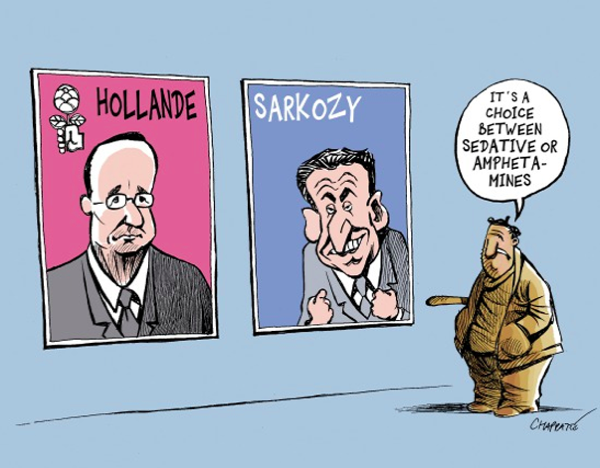
What, too, is a ‘growth’ strategy has never been addressed except to say that it should not be based on austerity measures. As manufacturing is becoming increasingly automated–labor costs amounted to only $7.10 of a total production cost of $178.40 for Apple’s iPhone 4–high-paying jobs in industry are simply disappearing. In large, vertically-integrated industrial operations, workers going on strike in a singe shop can disrupt the entire assembly line and hence undermine corporate profits. If workers in a gear-box plant down their tools, the entire auto assembly line will soon grind to a halt. Workers in the service sector–in the fast food industry or tellers in banks–simply do not have this structural power and hence their ability to bargain for better wages are far more limited. And as industrial production relocates overseas, more and more workers enter the service industries.
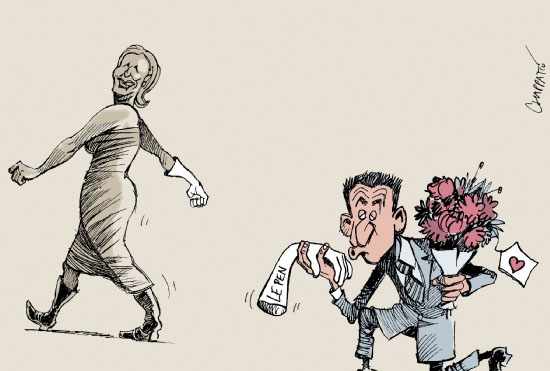
With lower incomes, their ability to consume is more limited. And this makes it less profitable to produce more goods and so industrial production continues to plummet as capital is increasingly allocated to financial speculation. This has the strange effect that whenever an election is held, the first question asked by the talking heads on TV is what would be the reaction of the markets to the results–because after the de-regulation of capital controls, the flows of capital into and out of a country are crucial to its economy and there is not government mechanism to regulate these flows.

In these conditions, governments are compelled to maintain market-friendly conditions and this is not something Hollande is likely to change. So what does growth-oriented policies mean? This needs to be spelt out beyond saying that it is the opposite of austerity programs, How is the economy going to add well-paying jobs in a situation when manufacturing is being steadily downgraded in the hierarchy of economic activities?
Europe: The Democratic Deficit
April 12, 2012 at 10:45 am | Posted in Capitalism, democracy, Free Trade, Human Rights, International Relations, Political Economy, World Politics | Leave a commentTags: 21st Century Capitalism, democracy, Euro, European Union, Eurozone, France, Germany, Greece, Libya, Spain, Syria, United Kingdom, World-economy
“A typical sight during the pre-election protests,” in Spain last year Katherine Ainger wrote in the Guardian, “was a respectable middle-aged man with a cigarette in one hand and a marker pen in the other going from municipal bin to municipal bin writing ‘Vote here’ on the lids.” A few months later, at the other end of the Eurozone, in return for loans from the European Union, leaders of all three major political parties in Greece were required to sign pledges not to rescind a savage austerity program cutting more than 3.3 billion euros from the budget, rendering these pledges concrete and irreversible regardless of the outcome of the general election in April 2012. If the ‘typical sight’ during last year’s Spanish elections suggested that all political parties are the same, the demand that the EU wrested from the Greek politicians proved that their general election, announced for May 6, was rendered meaningless as the victors could not implement a new program. Elections become meaningless.
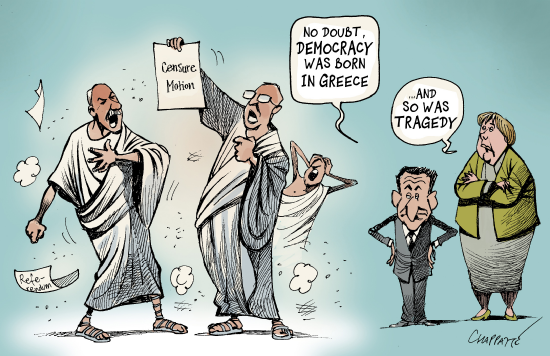
Paradoxically, just as French President Nicholas Sarkozy and British Prime Minister David Cameron after a brief hesitation, abandoned their client dictators in North Africa–even violently overthrowing the Gaddafi regime in Libya and chafing at the bit to do the same to the Bashar al-Assad regime in Syria–Sarkozy and German Chancellor Angela Merkel abandoned all pretense of supporting democracy when they forced then Greek Prime Minister Giorgios Papandreou to cancel a referendum he had proposed on the harsh terms imposed by the European Union for a bailout to Athens in November 2011. Threatening to expel Greece from the Eurozone, they effectively forced Papandreou to resign two days later and for him to be replaced by a national unity government headed by a former Vice President of the European Central Bank, Lucas Papademos.
Reporting in the Guardian, Helena Smith wrote:
For a country not only burdened by debt but closer to default than ever before, his appointment at the helm of a transitional government in Athens would be widely welcomed. An avuncular figure, Papademos is well respected in the European Union. In the corridors of power in Paris and Berlin, the capitals that count in deciding Greece’s fate, he is seen as a safe pair of hands, more capable than most at navigating the crisis-hit nation away from the shores of economic Armageddon.
Yet, this ‘safe pair of hands’ was the very one who, as president of the Greek Central Bank cooked the books so that Greece could enter the monetary union–and he was helped in this creative accounting by the European division of the Goldman Sachs—which is to be headed soon by the current president of the European Central Bank, Mario Draghi—for a fee of $300 million. Northern European governments only feign ignorance of their Mediterranean neighbors’ debts and subsidies, as Wolfgang Streeck notes, because their surveillance agencies could not “have failed to notice how countries like Greece saturated themselves with cheap credit after their accession to the Eurozone.” In fact, as government subsidies slowed down in conditions of budget consolidation, it was private flows that made up the difference–and it profited the export industries of the north because of the improved purchasing power among the Mediterranean countries—the prosperity of the north was predicated on the indebtedness of the south! Despite the fact that Eurostat had disclosed in 2004 that billions of euros had been shifted off public records in Greece, Athens continued to enjoy triple-A ratings.

Even the money being borrowed by Greece may have been the money of wealthy Greeks sent abroad as the Greek upper classes were practically tax-exempt as Stathis Kouvelakis has pointed out. When PASOK took office in 1981, it began to institute a social welfare system but did not seek to enlarge the tax base and even the middle class and the moderately wealthy remained exempt. In a sense then it is the untaxed money of richer Greeks, recycled through European banks, that is the source of the Greek debt! Yet, precisely because these funds were recycled through European banks, a Greek default would undermine the whole European financial system.
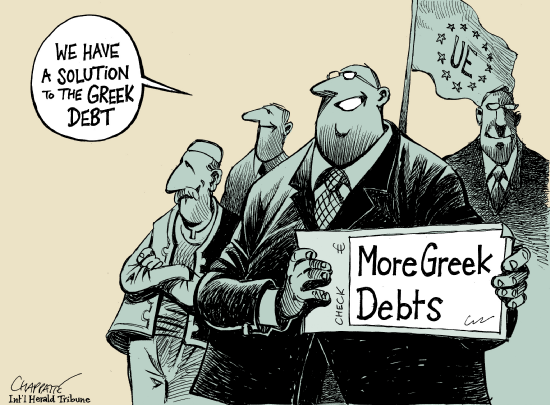
It is no wonder then that Sarkozy and Merkel refused to countenance a referendum in Greece and not only installed their own man at the helm of the government in Athens but placed officials from the ‘troika’–the European Union, the European Central Bank, and the International Monetary Fund–to oversee the operations of the government. Unless the Greek government complied with the stringent terms of the agreement imposed on it, funds in the escrow account will be withheld from Athens: a 32 percent cut in the minimum wage for those under 25, a 22 percent cut for those above 25, a cut in pensions by 25 percent on top of the laying off of some 200,000 workers over the past 12 months.

Given that politicians are hand-in-glove with the banks–from Goldman Sachs helping the Papademos shift billions of euros off the books to the Greek police beat up its Greek citizens to impose order for banks and hedge funds–it is no wonder that citizens are turning their backs on the politicians!
Iceland–An Independent People
April 20, 2011 at 2:49 pm | Posted in democracy, Free Trade, International Relations, Labor, Political Economy, World Politics | 2 CommentsTags: 21st Century Capitalism, Euro, European Union, financial crisis, Germany, Greece, Iceland, Internnational Monetary Fund, Ireland, Libya, NATO, neo-liberalism, Netherlands, Portugal, Spain, United Kingdom, US hegemony, US politics, World-economy
In the midst of the NATO campaign against Libya and the budget deal between Republicans and the Democrats in the US, a far more historically significant event appears to have fallen off the radar. On April 9, 2011, the people of Iceland voted for the second time to reject a government proposal for Iceland taxpayers to repay some €4 billion to the governments of Britain and the Netherlands which had compensated their domestic depositors in the collapsed online bank, Icesave. Initially, the British and Dutch governments had pressured the Iceland government to agree to repay them over fifteen years at a 5.5 percent annual interest–which was estimated to cost each household in the tiny island nation about €45,000 over the period. This was rejected by 91 percent of the voters in a referendum in March 2010. After subsequent negotiations, London and Amesterdam agreed to lower the interest to 3.2 percent and stretch the repayment period to 30 years between 2016 and 2046. The deal was accepted by a large majority of 44 in favor and 16 opposed in the Althingi, Iceland’s parliament, which also rejected a clause to submit the bill to another referendum. Nevertheless, as the President, Olafur Ragnar Grimsson, refused to sign the bill, it was automatically subject to a referendum wherein it was rejected by almost 60 percent of the voters.

The Dutch and British governments–which had used anti-terrorist legislation to seize assets of the failed Icelandic banks–have threatened to scupper Iceland’s application to join the European Union and to take the island nation to court. Reykjavik has insisted that the two governments would get most of their money back and the assets of the Landsbanki bank which set up the Icesave operation would be sold and was expected to realize 90 percent of the Icesave debt. What was at issue in the referendum was not whether London and Amsterdam would be compensated or not–but whether private citizens should be expected to shoulder the burden of repayment of a bank’s debt in which they had no hand in incurring and from which they did not benefit. The threat to take Iceland to court is important because it is to frighten off other states which also face indebtedness due to the financial crisis like Greece, Ireland, and Portugal. It is simply the question of whether the bankers have to bear the burden of the bad loans they have extended.
Iceland is, in fact, a case study of neo-liberalism gone awry. Before the late 1990s, Iceland’s financial sector had been small and the banks were largely government-owned. In 1998, the two leading parties–the Independence Party and the Centre Party–embarked on a privatization of the banking sector, assigning Landsbanki to grandees of the Independence Party and Kaupthing to the Centre Party. A new private bank, Glitnir, was also set up merging several smaller banks. None of these banks had much experience in international finance, but like South Korean banks a decade earlier, these banks tapped into abundant cheap credit and easy capital mobility. Unlike the South Korean banks, their strong ties to political parties, the merger of commercial and investment banking, and low soveriegn debt meant that they got extremely high grades from the credit ratings agencies and as Robert Wade and Silla Sigurgeirsdottir note: “government policy was now subordinated to their ends.”
With the government relaxing mortgage rules to permit loans up to 90 percent of value, the banks rode the wave–by buying shares in each other they inflated share prices and enticed depositors to shift their savings to shares. In less than 10 years after the privatization of banks, Iceland had the fifth highest GDP in the world, 60 percent higher than that of the United States, and the assets of their banks was valued at 800 percent of Iceland’s GDP. As land prices soared, Icelanders loaded up on lower-interest yen- or Swiss-franc debt.
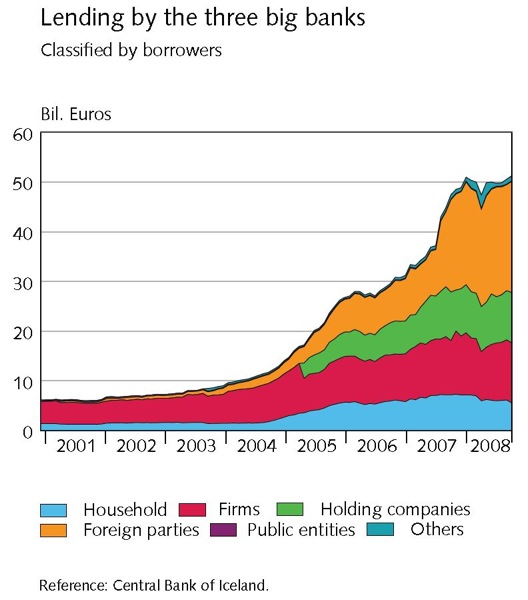
By 2006, Iceland’s current account deficit had soared to 20 percent of its GDP. Late in that year, Landsbanki established an online bank, Icesave, to attract deposits from overseas clients and by offering highly attractive interest rates, it raked in millions of pounds from England, and later millions of euros especially from the Netherlands. This was soon copied by the two other banks. These were established as ‘branches’ rather than as ‘subsidiaries‘ which meant that they were to be supervised by the icelandic Central Bank rather than regulators in Britain or the Netherlands. Because of Iceland’s obligations as a member of the European Economic Area to insure bank deposits, no one thought to worry about whether the Icelandic Central Bank had the capacity to oversee the vastly extended operations of the island’s three major banks.
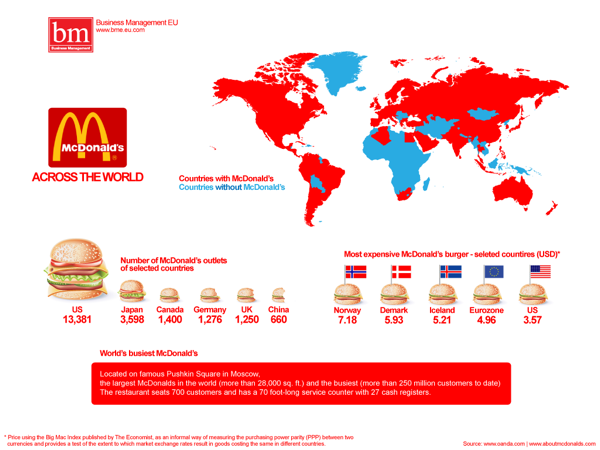
This happy bubble burst in September 2008 when Lehman Brothers collapsed, within a fortnight of which the three big Icelandic banks collapsed and by November of that year the krona had fallen from its pre-crisis level of 70 to the euro to 190 to the euro, so sharply cutting the islanders’ purchasing power that the three McDonald’s franchises were forced to close as the cost of importing ingredients made the price of burgers prohibitive! The country’s stock market lost 98 percent of its value! If ever there was a definition of crisis, this was it. It was the first time in over 30 years that a ‘developed’ state had to seek assistance from the International Monetary Fund.
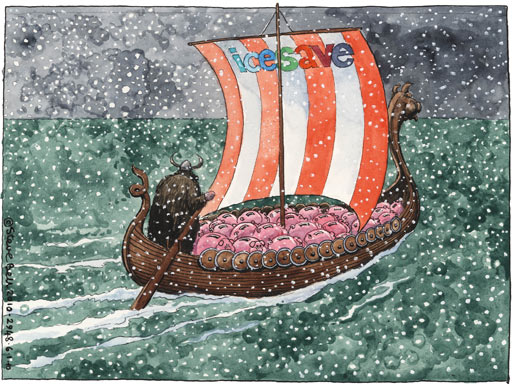
In the light of all this, Iceland’s voters have had the courage to face up to the crisis. It was the first country to kick out the government which had failed so spectacularly. Unlike its neighbor in the North Atlantic–Ireland which underwrote its own banking collapse and loader every household with €80,000 in debt–Iceland let the three banks go under and they imposed capital controls to prevent the flight of capital. Though unemployment in Iceland today is 7.5 percent in Iceland–up from 2 percent in 2002–but just over half of Ireland’s 13.6 percent. Though the krona lost almost half its value, inflation is down sharply and without having to pay back foreign creditors, its government finances are in much better shape than those of Greece, Ireland, or Portugal.
Japan: Geoeconomic Consequences of Nature’s Fury and Human Folly
March 18, 2011 at 4:02 pm | Posted in Nuclear Non-Proliferation, Outsourcing, Political Economy, Production | Leave a commentTags: 21st Century Capitalism, East Asia, European Union, Global South, Japan, Manufacturing, US Economy, World-economy
Scarcely believable images of the destruction wrought by a 9.0 earthquake that struck 250 miles northeast of Tokyo and unleashed a tsunami that generated 10 meter high waves–of entire communities being obliterated–and made worse by triggering a nuclear meltdown at the Fukushima Daiichi plant has been at the center of world news. While concern has understandably been on the human cost of the tragedy, the economic costs are also staggering. While it is too early to make an assessment, early estimates already suggest that world economic growth may fall by at least a full percentage point.
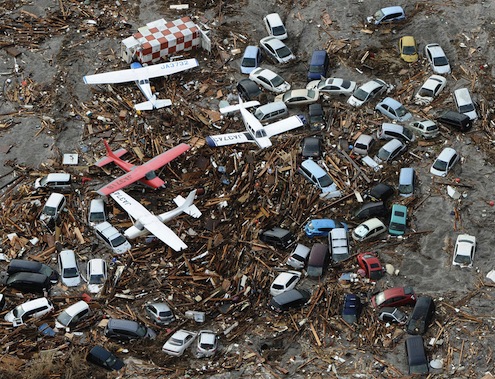
In the most immediate instance, it would cause enormous supply chain disruptions to production as Japanese manufacturers produce a whole array of sophisticated components and finished products. For an economy vitally dependent on exports this could be a vital blow–but it would also affect manufacturers world-wide as they source components from Japan, Additionally, the demand for reconstruction funds for Japan could reasonably be expected to lead to a redirection of financial flows with adverse consequences not only for debt-ridden economies like those of the United States but also for the ’emerging economies’ of the Global South.
The estimated $200 billion required to rebuild Japan after the earthquake on March 11, 2011 and the tsunami already triggered a 6 percent rise in the yen with 5 days–from a peak of ¥76.25 to the dollar to ¥81.20–as investors started repatriating funds for Japanese reconstruction before the G-7 economies intervened in currency markets in a concerted effort to drive the yen lower and help stabilize the Japanese economy as a higher yen would have made Japanese exports dearer overseas and hence driven down demand for them.
Fears that radiation from the crippled nuclear reactors at Fukushima Daiichi may be transported through Japanese exports has led to many restaurants to ban Japanese food items like sushi, Kobe beef, and sake. But there has also been apprehension that consumers may be exposed to radiation when driving a Prius car or using a Japanese DVD–a severe blow to an export dependent economy. Even though such fears may be misplaced because the main manufacturing centers are located away from areas near the crippled nuclear reactors and most manufacturing occurs indoors in factories and hence is not directly exposed to airborne radioactive particles, apprehensions are by nature irrational and could lead to a steep decline in consumer demand.

On March 17, General Motors became the first automobile manufacturer to announce that it will temporarily halt production in its truck plant in Shreveport, Louisiana because of a shortage of Japanese-made parts as a result of the natural disasters in that island nation. The fact that was GM rather than Toyota, Honda, or Nissan to be the first auto manufacturer to stop production because of supply-related problems stemming from the natural disasters underlines the gravity and extent of the disruption of supply-chains from Japan for producers the world over. 10 percent of Volvo’s parts for instance comes from 33 Japanese suppliers, 9 of which were in areas affected by the disasters and Volkswagen has warned of medium-term supply problems. Some Japanese manufacturers–Mitsubishi and Nissan–have opened some of their facilities while Toyota is due to open some of its plants early next week. It is uncertain how long these can operate because they and their suppliers may face problems obtaining raw materials and parts and in shipping finished products due to logistical problems caused by the earthquake, tsunami, and the exclusion zone imposed by fears of a nuclear meltdown at the reactors in Fukushima Daiichi. A Detroit based consultant, John Hoffecker, estimates that an average car had 20,000 components and the abrupt loss of any one component could halt production in its tracks, especially because most manufacturers have implemented just-in-time production systems that reduce inventories.
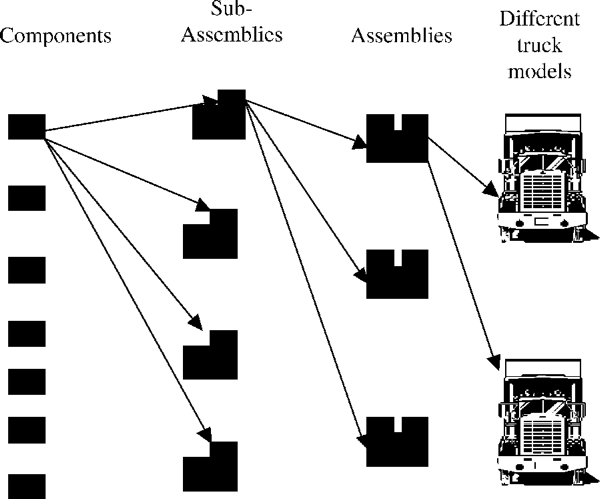
Given Japan’s advanced manufacturing technologies, disruptions are not limited of course to the automobile sector. Sony Ericsson and Nokia have warned that they face supply problems for their smart phones, for instance. Apple Computer’s latest gadget the iPad 2 depends on the advanced manufacturing technologies of Japan for crucial components like flash memory to store audio and video files that are manufactured by Toyota which shut down its manufacturing facilities due to the earthquake and tsunami. Other iPad 2 components sourced from Japan include “AKM Semiconductor and DRAM memory produced by Elpida Memory. A touchscreen overlay glass is likely from Asahi Glass.” Even if these suppliers are not directly hit by the earthquake, tsunami, or t, the logistical disruptions caused by the natural disasters including obtaining raw materials and parts and shipping finished goods are likely to hamper production.
it is impossible to assess the costs of reconstruction. Initial estimates of $200 billion were based on the experience of the 1995 Kobe earthquake. Not only was the present earthquake much more destructive in scale but it was also accompanied by a massive tsunami and a nuclear meltdown. With a debt-to-GDP ratio double that of the United States, and credit-rating agencies being more prudent after the financial crisis of 2008-09, raising funds at a tolerable rate of interest could be difficult. Unlike the United States which could pump $600 billion as stimulus during the financial crisis, the yen does not enjoy international reserve currency status and hence this is not an option for the Japanese.
This raises the possibility that Japan, which is the third largest holder of US Treasuries, will sell off large chunks of the $877 billion it holds to finance its reconstruction–a sell-off that will have a major impact on interest rates all across the world and depress the value of US Treasuries and could trigger an avalanche of sales of the Treasuries as other holders seek to minimize their holdings. It could cause another enormous liquidity crisis as the financial crisis just did and comes at a time when the economies of the US and the European Union are still weak.
Capitalism as Anti-Market
December 16, 2010 at 10:39 pm | Posted in Capitalism, Free Trade, Political Economy, World Politics | 2 CommentsTags: 21st Century Capitalism, US Economy, US hegemony, US politics, World-economy
Nothing shatters the myth of free market capitalism than reports that an anonymous group of bankers from the largest Wall Street giants meet privately on the third Wednesday of every month to overseas trading in derivatives. Though the big banks claim that this secretive committee–“even their identities have been strictly confidential” says a New York Times report–exists to safeguard the integrity of the markets, they also have fought bitterly to prevent other banks from entering the market and obstructed all attempts to make full information on prices and fees freely available.
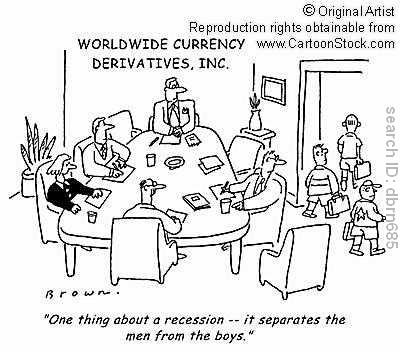
In the most profitable sector of the economy–where derivatives traders are routinely paid tens and hundreds of millions of dollars as compensation and bonuses–markets do not function the way the politicians, economists, commentators, and bureaucrats tell us they do: the forces of supply and demand do not operate without distortions; there is no free flow of information or transparency and customers are price-takers rather than price-makers.
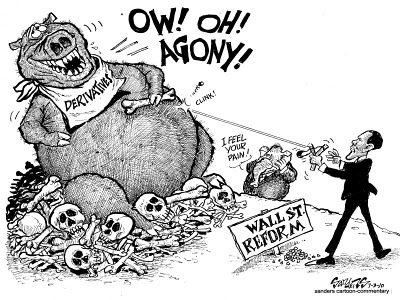
This, of course, has always been true of capitalism. Fernand Braudel had argued that contrary to prevailing myths, capitalism is anti-market. The market economy, the world of transparent visible realities on which ‘economic science’ was founded, he contended was ‘the not unacceptable face of ‘micro-capitalism,’ barely distinguishable fro ordinary work,” it was very different from the rarefied heights from where exceptional profits–as cornered by the derivatives traders and financiers–are reaped.
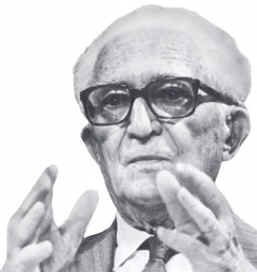
It is precisely because derivatives are ‘exotic’ instruments and not understood by the public, that the virtual identity between free markets and capitalism incessantly proclaimed by policymakers, economists, and journalists live on in the public domain. In many transactions at the corner grocery store or a farmers’ market, there is an appearance of free markets–of small producers and shop keepers selling goods to the public, “barely distinguishable from ordinary work.” But even here, the principles of the market do not operate. No seller in a farmer’s market can know the costs of production of their competitors and nor could consumers go to every seller even in a nearby area to compare prices–in most cases, sellers quote prices they think they can get away with and consumers pay what they think they can afford.
Derivatives trade, of course, is very different. They are designed to shift risks. Typically, if the price of a gallon of oil is $2.50, large consumers may choose to lock in future supplies at $2,80 a gallon so that if prices soar to $3.00 or $3.50 a gallon, they will be insulated from the rise. Their suppliers have no idea how much lower they could charge their customers because the banks dont disclose the process by which prices are set. This is where the collusion takes place–and where the big profits are reaped.
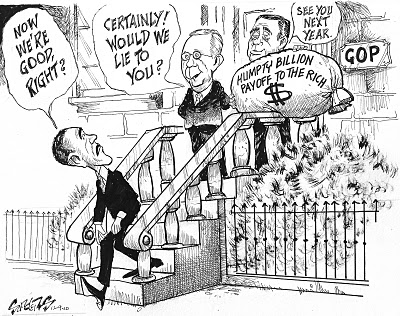
If this is not enough, we also learn that as the financial crisis set in 2008, the US Federal Reserve opened its vaults a staggering 174 times within a 13-month period to the Citigroup, that Barclays, the British Bank owed the Fed some $48 billion at one time and on and on the list goes of the US Central Bank massively shoring up domestic and foreign banks and even to corporations such as Harley Davidson and McDonalds without public scrutiny. Needless to say, no such facility was ever considered for smaller operators. So much for free markets without the distorting influence of the state!
Blog at WordPress.com.
Entries and comments feeds.

